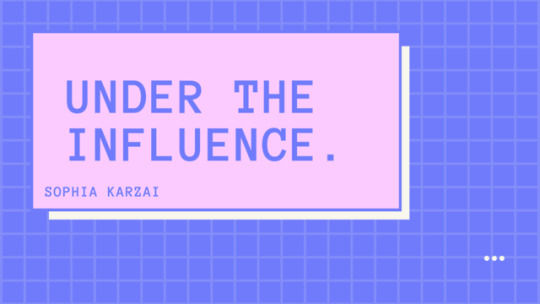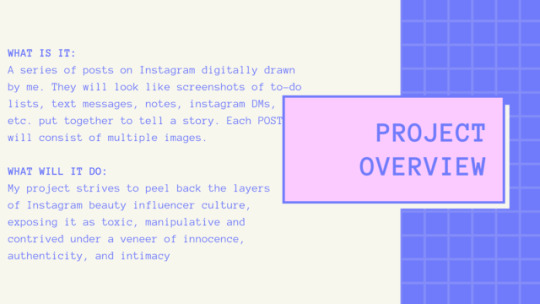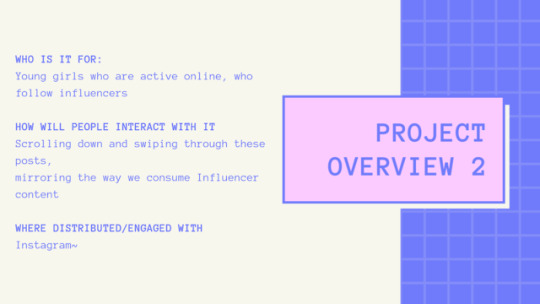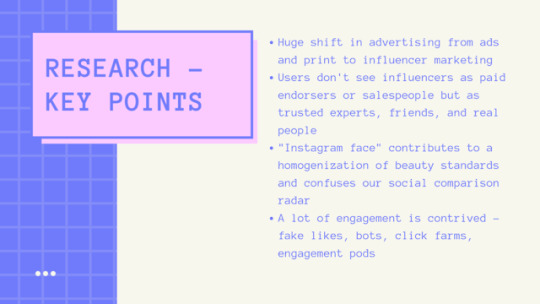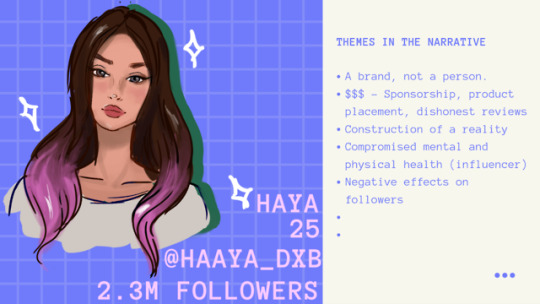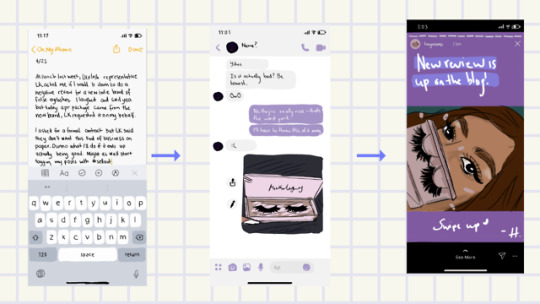Text
Project 2: Reflection
On the process:
While I immediately knew what I wanted to do my second project on, I spent most of my time trying to choose a medium or form for it. I think that making my systems map really helped with this and I should have done it a lot earlier.
I also really struggled with thinking that my ideas were ‘good’ and my project was interesting or important. I found that I was constantly asking for validation from other people and it was only after getting that approval that I would feel confident enough in continuing to work. This is a confidence problem that bleeds into all of my artistic work and that I need to get over.
I did not see how big the project had to be until I was working on the project. It had seemed a lot smaller and more achievable in my head, but as I was working I realized that to get the end result and impact I wanted, I would have to put in a lot more than I had planned. Because of this, I was really disappointed in myself by the final week.
If I were to rewind and do this project all over again I would try to:
Find a way to automate or streamline a lot of the time-consuming, brain numbing tasks like painting chat bubbles or time stamps. The chat bubbles, for example, I could simplify by making custom brushes. I could have had template layers for things like Instagram posts or tweets.
Stop pressing ctrl+z all the time. Everything took me so much longer because I was so finicky with lines and alignment – some were too neat, some were too messy. I would redo the tiniest element, such as the battery bar, fifteen times with tiny variations. Because of this, every panel took three times as long as it should have.
Get more feedback during the design process. I could have cut my brainstorming time by a lot if I had asked people to pitch ideas as well, telling me about things they see that make them uncomfortable or worried from influencers. I think this would have been really valuable input that I disregarded. I did some testing with panels, for example by sending a completed one and asking “what does this mean to you/does this make sense”, but by then I had already completed that image and didn’t have the time to change it.
I should have learned more about comics and paneling as a part of my research. To be honest, I’ve read very few comic books (like, four?) and have only started to do so recently. I think having a more solid base in that area would have lended to my work.
I’m interested in using the medium to its fullest capacity to deliver the message, and I feel like I’ve only scratched the surface in terms of what is possible. Instagram posts allow for videos, so what about learning how to make short animations? That would have been a cool way to show the airbrushing/editing of photos. Cinemagraphs are super cool to me and very #trendy, where it’s a still photo but one element is animated. I think in terms of learning new techniques or programs; I didn’t really deliver.
Next steps;
Putting it ‘out there’. I want to employ Instagram tactics to get an audience. I think that people who are complicit in things like ‘follow for follow’, spamming hashtags with likes, and using third party apps to gain followers/likes are the people who this has to reach the most? Because they’re so trapped in this system.
I’d like to expand the project so it has a satisfying character ‘arc’ for Haya and a narrative that can be followed. I found that my panels were critical enough, they didn’t have the shock or horror factor that I wanted them to because I didn’t want to be so heavy-handed so quickly. I was going for more of a slow realization, or for the reader to sympathize with this person before they realize ultimately that she’s involved in a dangerous culture and actively hurting other people. That requires more panels and more world building.
It would be cool to create a community through this Instagram account. I’d like to get feedback from people via DM’s who want to submit their own narrative, or for the account to actively respond to what’s happening in the Instagram Influencer community. For example, right now the James Charles/Tati Westbrook scandal is the current fixation of this part of the internet, two influencers and former friends fighting because one decided to work with a big name ‘beauty vitamin’ company instead of the other’s beauty vitamin company. It would be interesting for this account to respond to that through these panels.
My worry is the chronology I chose. Because of the way Instagram posts are grouped on a profile chronologically, adding new posts would confuse the narrative structure. I’d have to go back and delete posts to add to the end or middle.
Summary of critique;
I got pretty positive feedback (which is good because I am very sensitive and crumble under the slightest criticism) so I don’t remember any big critiques other than continuing to expand the project and user testing it. I think that my biggest criticisms are from myself.
I want everything to look a lot neater and more professional, I wish I had used more consistency with the line style or the brushes I used.
There are inconsistencies in color and line alignment that seem glaringly obvious now.
It’s easy to spot the difference between the first few panels I did and the last ones and that’s not good in terms of consistent style.
I’m looking for a more legible font, and a way for Instagram to not compress the images so poorly that the posts are a little pixelated.
There are some typos that I didn’t think too much about because people are always making typos when they text.
I think I relied too heavily on texting as a visual tool and that was lazy of me, I should have gotten more creative with conveying information. More to-do lists, search histories, doctor’s notes, reminders, etc. More pictures and colors would have been nice too, there’s currently too much text, I think.
The Instagram captions were alright but I think I could have spent more time working on them and their voice.
I think I should have done at least 3 more panels, and I would have if I planned my time better.
I should have planned more to fit my research in better. I only incorporated a small part of what I found into the project. I didn’t get into -the body dysmorphia, things like snapchat filters and airbrushing.
There were a lot of topics that I was just too uncomfortable to broach, but I should have
Research;
While I sifted through many scholarly articles and journals, the research that really helped and inspired me was not so scholarly. It really was the sort of masochistic act of following loads of influencers and keeping up with their drama that provided me with material for my project. I found myself screenshotting and screen recording the most ridiculous and appalling things. The interesting part was, the more influencers that I followed, the more the advertisements that appeared on my newsfeeds changed. After a while, I was getting ads on surgery, clinics in the area and shady meal plan subscriptions, almost daily, whereas before, these topics rarely appeared.
The scholarly stuff worked more to validate that the problem I’m studying is big enough and quantifiable enough to be a real cause of concern.
0 notes
Text
final.
https://www.instagram.com/haaya.dxb/
0 notes
Photo
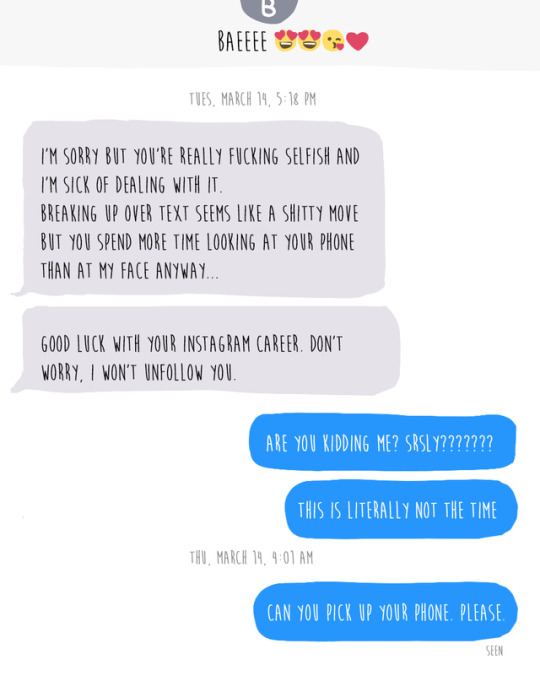
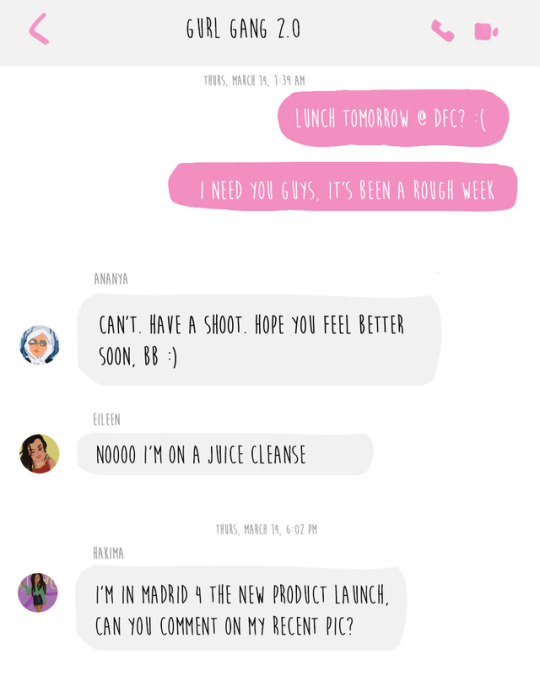
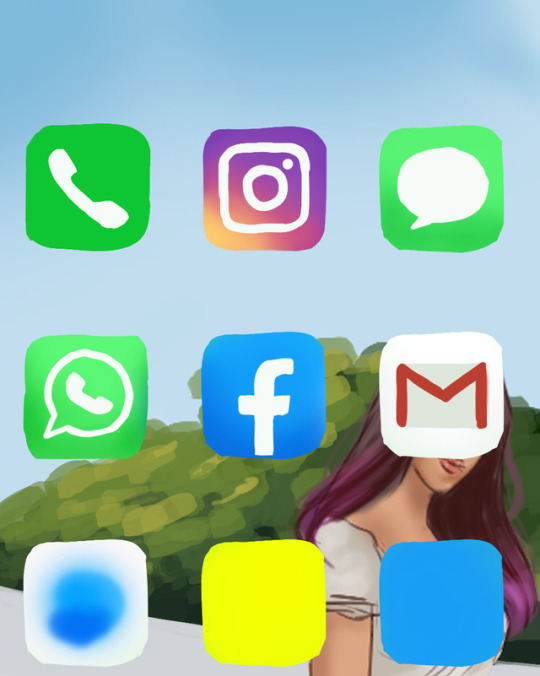
Posts in progress - not sure if this font is legible at different sizes?
0 notes
Text
Shady Influencer Practices - Faking Engagement
1. Engagement pods - a group of 10-50 influencers who message onto a group chat whenever they post a new photo/video on Instagram. Everyone else in the pod has to then immediately like and comment on the new post. Thus, this beats the new Instagram algorithm, where the more popular a post is just after posting, the more prominently it will show up on other people’s news feeds. Instagram found a way to get rid of pods that were using the Instagram group chat, however, pods then moved to Telegram, Whatsapp, and other private messaging apps. Each pod has its own rules set up.
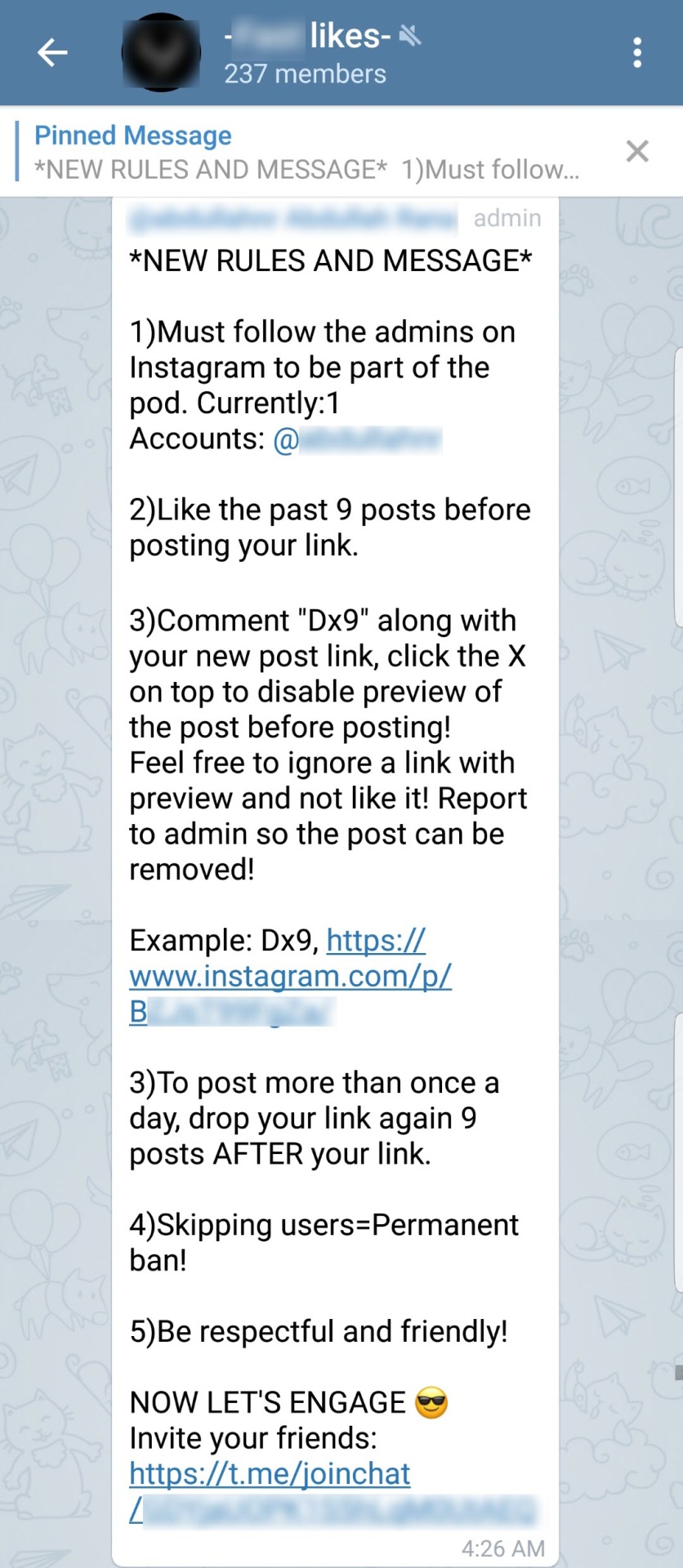
2. Click Farms - consists of usually one person interacting with a website repeatedly to artificially boost engagement. Click farms are usually located in developing countries and employees work in poor conditions.
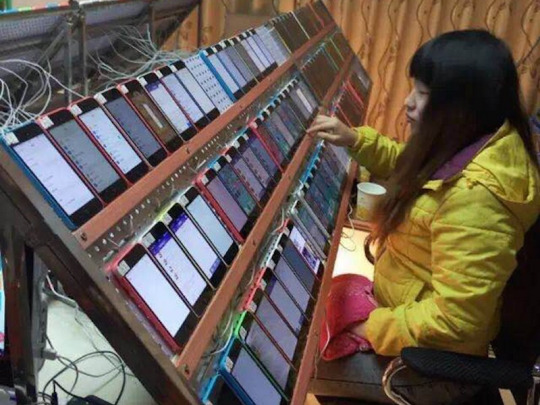
3. Bots - “ Points North Group said it has found that midlevel influencers—those with between 50,000 and 100,000 followers—often have about 20% fake followers”. (Source - https://www.wsj.com/articles/unilever-demands-influencer-marketing-business-clean-up-its-act-1529272861)
“ In November, Facebook disclosed to investors that it had at least twice as many fake users as it previously estimated, indicating that up to 60 million automated accounts may roam the world’s largest social media platform. These fake accounts, known as bots, can help sway advertising audiences and reshape political debates. They can defraud businesses and ruin reputations. Yet their creation and sale fall into a legal gray zone. “ (Source: https://www.nytimes.com/interactive/2018/01/27/technology/social-media-bots.html?mod=article_inline)
A lot of the articles that write about fake engagement do so looking at it from the perspective of brands who want to collaborate with influencers, and warning them about fake engagement. All new regulations on bots, engagement pods, and farms are being pushing by big marketing corporations who think this will hurt their sales.
I don’t care about the effect on brands, I’m more interested in the real audience of the influencer, as well as the influencer themselves. Why would someone want fake engagement (greed? Vanity metrics?) and what does a high engagement count mean to the audience of the influencer? Are they more “influenced”?
0 notes
Photo
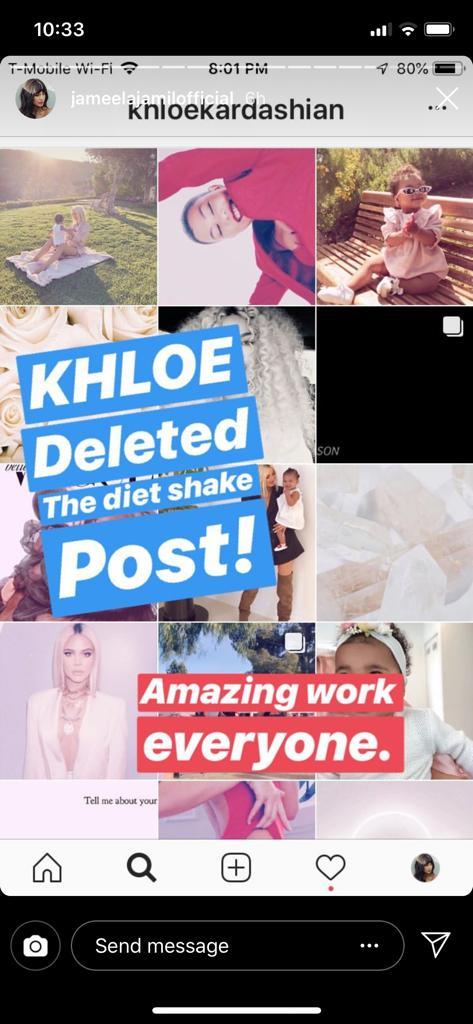
Changing Beauty Influencer Culture - Can it even be done?
A lot of the research I’ve been doing keeps reiterating that self-hatred is the fuel that powers billion dollar industries (cosmetic/diet/etc), because as long as you hate things about yourself you will keep buying products to change them. And so anything that perpetuates a narrative of self-hatred will 100% be supported by these huge industries and corporations. And so I’ve wondered if something as widespread and pervasive as influencer culture can ever really be shaken up/changed by a movement that is fundamentally against this hatred.
Amidst this, actress Jameela Jamil has been waging war on the most notorious of influencers (The Kardashians). A few days ago, Jamil won her first victory and Khloe Kardashian deleted a post advertising a laxative tea brand. I have been interested by Jameela and her I Weigh campaign ever since I watched this interview 3 weeks ago, where she really succinctly discusses the problems with the beauty industry today, how influencers contribute to it, and how it’s changed from the 90′s - now with social media.
https://youtu.be/BXzO0z6fmhI?t=1485
Time stamps, because it’s quite long:
24:45 - 27:40 ----Calling out influencers as ‘double-agents of the patriarchy’: “Just because you look like a women, we trust you and we think you’re on your side. But you are selling us something that doesn’t make us feel good...an ideal...a problem with aging, a problem with wrinkles, with gravity...you’re like, recycling hatred.”
5:00 - 12:45 --- Begins by explaining how before, “you had to seek out the toxicity....now you don’t even have to go looking for it. Its everywhere and younger and younger people have mobile phones...children are too exposed to this.” Then continues to talk about the effects of growing up with this narrative of ideal beauty.
0 notes
Photo
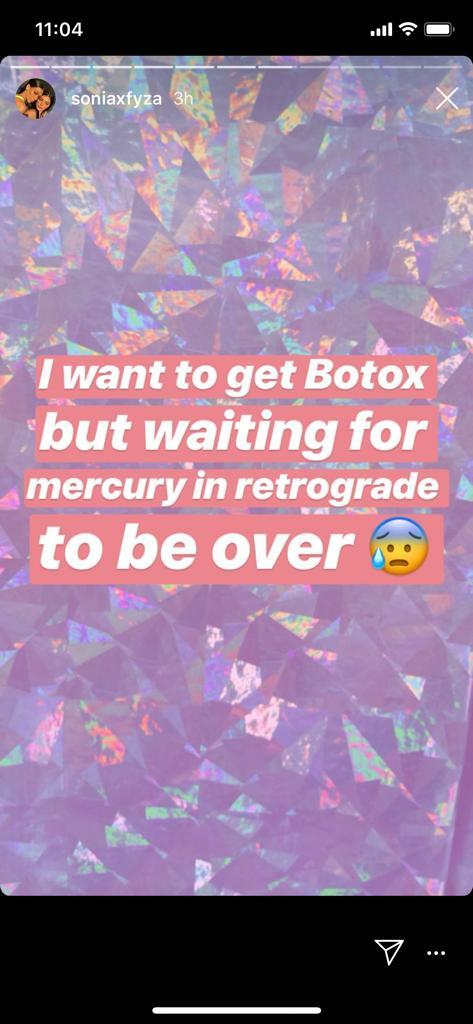
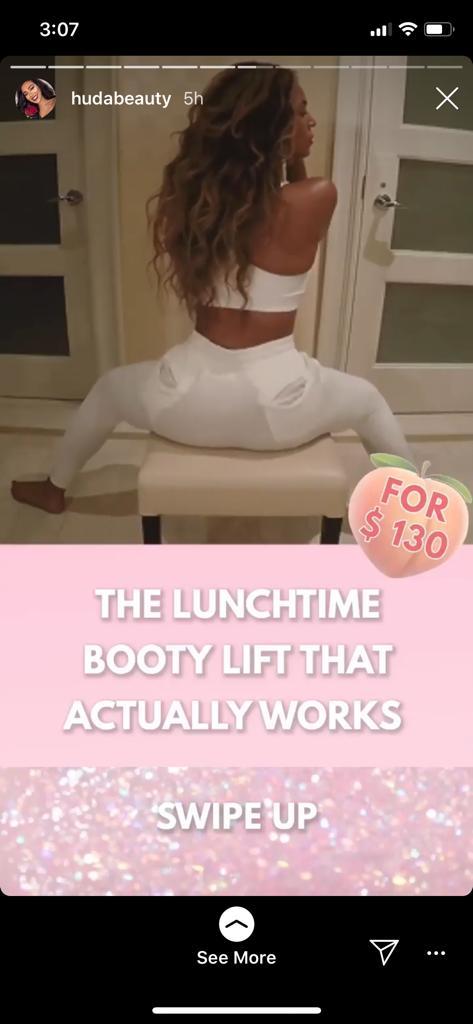
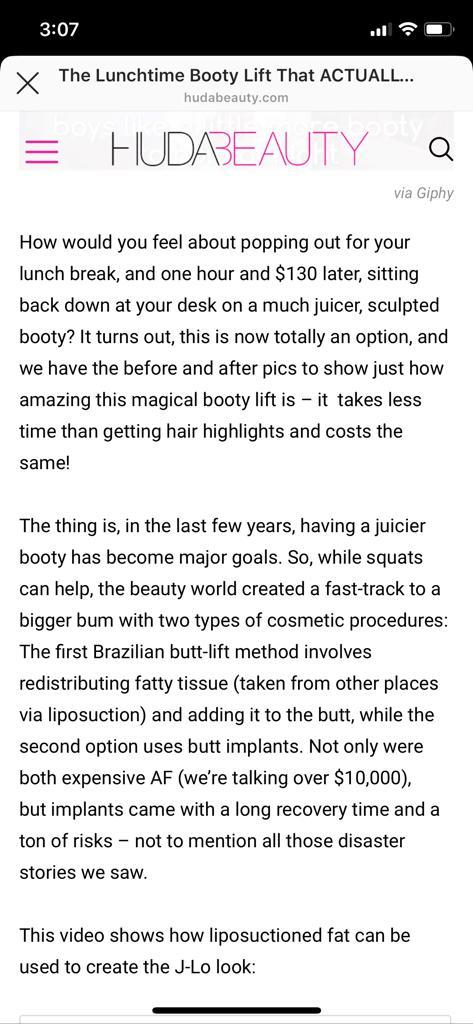
MISC: A collection of things I’ve screenshotted since following multiple, prominent influencers in the region on Instagram:
1. Hilarity aside, many influencers are pretty open about their cosmetic procedures in this region.
2 and 3: HudaBeauty, dubai based but frequently cited as THE most popular influencer in the Middle East, frequently posts links to articles on her blog about new cosmetic procedures. I can’t help but note the form of these articles as a story, there’s always a gif (here, it’s one of beyonce), cute stickers like the peach, and a sparkly pink background. The language too (”having a juicer booty is major goals”) is also very much targeting a young audience.

4. Huda Kattan’s (Huda Beauty founder) seven-year-old daughter in a video applying make up. I’ve noticed an increase in the amount of ‘funny/cute’ videos where VERY young children are filmed applying make-up/ going to the salon and getting extensions, which has me thinking about this:
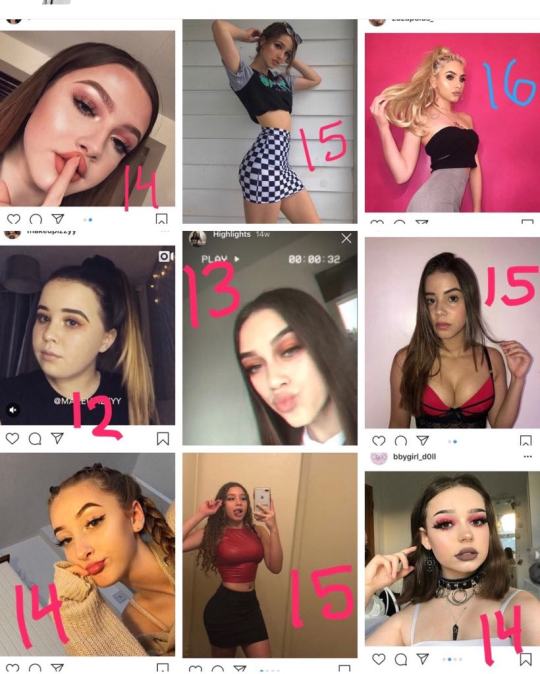
5. The age in which girls are expected to perform this hyper-femininity and hyper-visibility online is getting lower. What happened to that natural awkward phase that middle school/high school kids had from 12-16? All of these girls look much, much older than they are.

6. Rania joking about her PR packages. From what I’ve seen, most of this stuff will be thrown away or gathering dust in some corner of a room after unboxing.
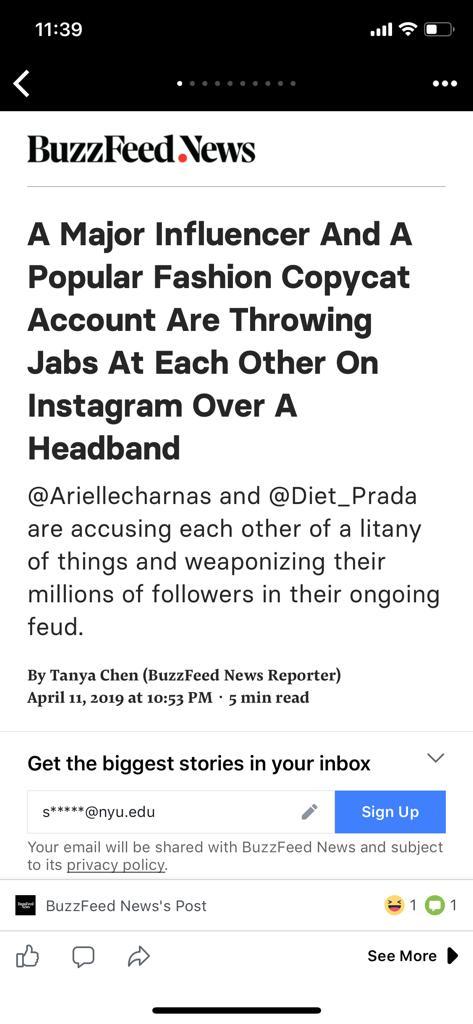
7. I’m interested in the idea of ‘weaponizing followers’. Is having a following online any different than having a dedicated army at your disposal? I’ve seen entire businesses shut down because a single influencer set their followers loose on said business. This is a lot of power for one person. Remember when Kylie Jenner tweeted that she didn’t like the new Snapchat re-design in 2018 and as a response, Snapchat stock lost $1.3 billion.
Kylie Jenner is an interesting topic. It’s safe to say that she’s The Influencer, Her every post single-handedly shapes the entirety of the beauty community. Anything that is accepted now is accepted because she did it, whether its lip fillers, corn rows, starting a make up line, or teatox tea. There’s this rapid superfan who tattooed the initial swatches of Kylie’s lipstick line onto his arm. I think about him a lot:
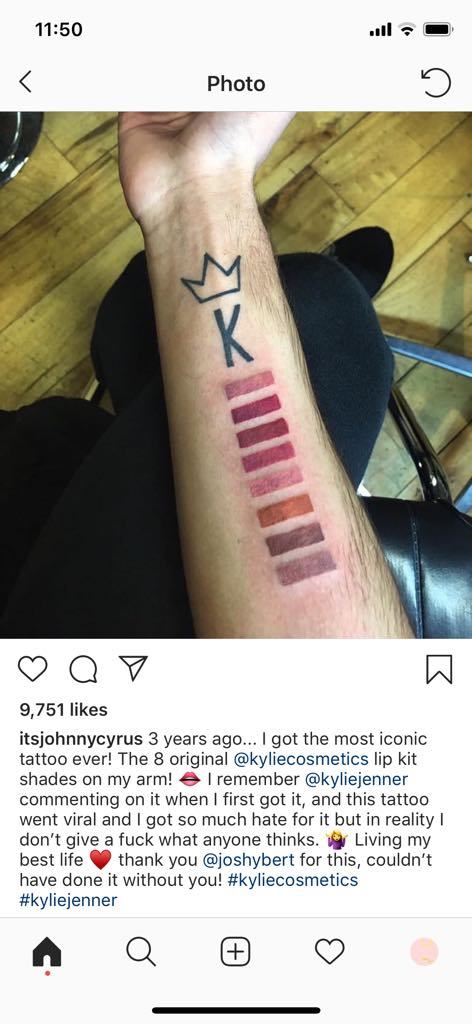
0 notes
Text
Research Dump Pt 2 - April/11
If I don’t post it here I will probably forget.
Scholarly article on female athletes and their media representation that I thought was interesting:
Thorpe, H., Toffoletti, K., & Bruce, T. (2017). Sportswomen and Social Media: Bringing Third-Wave Feminism, Postfeminism, and Neoliberal Feminism Into Conversation. Journal of Sport and Social Issues, 41(5), 359–383. https://doi.org/10.1177/0193723517730808
--
And some more journalistic pieces that I found really enlightening, many of them discuss the more business/advertising/branding/monetary aspect of influencer culture:
https://www.thedailybeast.com/the-inscrutable-rise-of-the-online-influencer
“In the past few years, the term “influencer” has become virtually unavoidable. It’s been embraced by ad agencies (a recent study from the Association of National Advertisers found that 75 percent of companies use influencer marketing); adopted by retailers (fashion e-commerce site Revolve used the word 79 times in their IPO filing last month); welcomed into the lexicon of mainstream media (a Google search for “influencer” and “New York Times” yields nearly 3 million results); and cited so often by critics as an emblem of cultural decay, that it’s become a kind of shorthand for the perversions of late capitalism. But for a word so widely used, it’s surprisingly hard to grasp what it actually means.By most accounts, “influencing” has something to do with social media and something to do with marketing. Money, power, and popularity are involved, as are brand identities, promotional samples, and likes. But like so much corporate jargon, when taken literally, the phrase, denoting only a vague power to affect, is spectacularly hollow. A Google image search for “influencer,” for example, yields a constellation—not of people—but of near-identical infographics, whose cartoon characters point, whisper, and, weirdly, hold magnets. Even the etymology is cryptic: “influence” stems from a Latin astrology term, meaning “the flowing in of ethereal fluid (affecting human destiny).””
https://www.theguardian.com/us-news/2019/jan/08/instagram-influencers-psychology-social-media-anxiety
The study author, Danielle Leigh Wagstaff, a psychology professor at Federation University Australia, says people naturally compare themselves with others because it helps us figure out where we stand. She believes that Instagram – more so than any other platform – confuses our social comparison radar. We’re constantly trying to figure out if we’re more or less attractive, smart, and accomplished than everyone else.
“With Instagram, we have immediate access to all of these idealized images, which aren’t always an accurate representation of the world,” Wagstaff says. “People tend to post only their best images on Instagram, using filters that make them look beautiful. We have a false sense of what the average is, which makes us feel worse about ourselves.”
Now imagine you’re trying to make Instagram your full-time job. Instagram influencers make a living off social media by using their personal profiles to advertise products for brands via beautiful photos, chasing an industry with dramatic potential: In 2017, Mediakix predicted that businesses would spend $1.07bn on influencer marketing. Often, influencers receive free merchandise or payment for this strategic work.
https://www.wired.com/story/pricey-war-influence-your-instagram-feed/
Social media influencers ply their trade in realms far beyond fake lashes. Marketers of literature, wellness, fashion, entertainment, and other wares are all hooked on influencers. As brands have warmed to social-media advertising, influencer marketing has grown into a multibillion-dollar industry. Unlike traditional television or print ads, influencers have dedicated niche followings who take their word as gospel.
There’s another plus: Many users don’t view influencers as paid endorsers or salespeople—even though a significant percentage are—but as trusted experts, friends, and “real” people. This perceived authenticity is part of why brands shell out so much cash in exchange for a brief appearance in your Instagram feed.
https://www.theatlantic.com/technology/archive/2018/12/influencers-are-faking-brand-deals/578401/
“It’s street cred—the more sponsors you have, the more credibility you have.”
-----
And there are a few articles about “Instagram Face”, the homogenization of beauty standards to the point that everyone looks the same:
https://www.huffpost.com/entry/instagram-influencers-beauty_n_5aa13616e4b002df2c6163bc
https://www.nytimes.com/2016/11/30/fashion/instagram-makeup-paid-selfies-beauty.html
The first area of criticism is the prevalence of “Instagram makeup.” The aesthetic is familiar: eyebrows constructed by powder, pencil and concealer; faces heavily contoured and highlighted. Social media makeup enthusiasts become facsimiles of one another — all some version of Kim Kardashian West.
Social media “absolutely perpetuates one aesthetic,” said Kevin James Bennett, a longtime makeup artist and advocate for his professional peers. “It’s like looking at a bunch of clones. They’re Botoxed, filled and surgeried to look like Kim. I love how they all say, ‘Just be you,’ when they all look the same. And they have legions of fans who follow them like Stepford wives but who cannot afford to alter themselves the way these people do.”
Certainly there are talented self-taught artists on social media. And trends change. Ms. Kardashian West has moved toward a more natural makeup look. Nonetheless, “Instagram face” is representative of a bigger creative threat: waning individuality.
0 notes
Photo
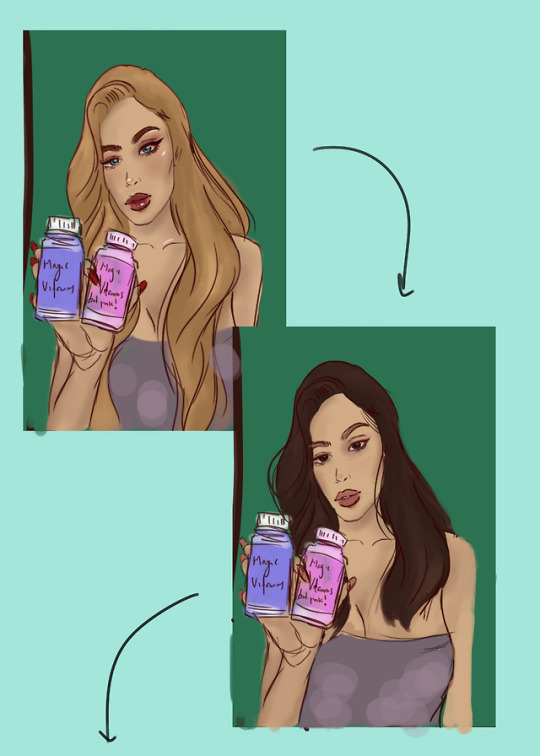
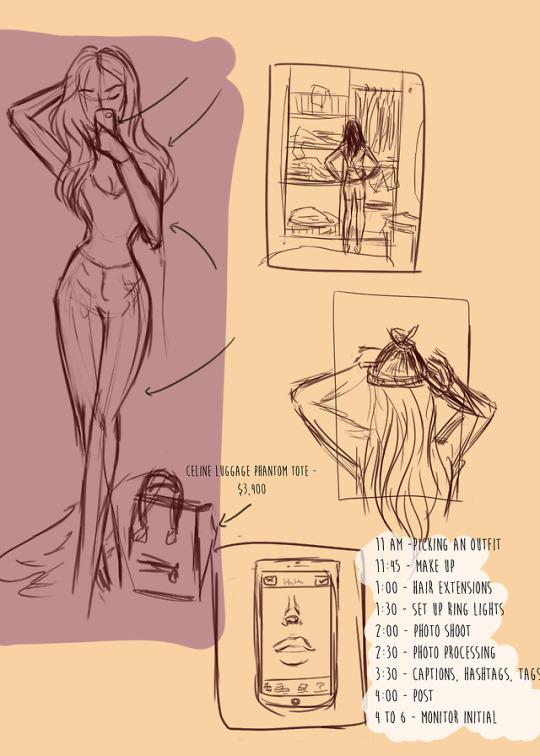
Sketches - April/11
I had a couple of ideas for a final form and sketched them out. I really like the idea of the final project being displayed on an instagram account, and I also know that I want them to be digital illustrations, but I’m unsure of what form exactly they will take.
1. The first idea was to make use of Instagram’s ability to have multiple photos in one post. I was thinking about a series of illustrations that strip down the many layers of artifice in a photo, from removing filters, to re-adding texture to the skin, to toning down make up and removing contacts, hair extensions, false eyelashes, bra inserts.
2. The second idea has a few iterations. I was thinking generally about the tedious and labor intensive process of getting an Instagram worthy photo and wondered if illustrating those steps would be impactful or help viewers see that. I was also thinking about what it would look like if I broke down each image to all it’s parts using annotations. Another idea was to perhaps stage posts like diary entries with illustrations, and the writing of the entries would have an implicit critique of beauty influencer culture, if that makes sense.
0 notes
Text
Bibliography (so far) (still super rough)
Susie Khamis, Lawrence Ang & Raymond Welling (2017) Self-branding, ‘micro-celebrity’ and the rise of Social Media Influencers, Celebrity Studies, 8:2, 191-208, DOI: 10.1080/19392397.2016.1218292
“This article considers how and why the concept of self-branding has become so prevalent. We contend that it parallels the growth of digital technology (particularly social media) embedded in the current political climate: neoliberal individualism.”
Theresa M. Senft first coined the term ‘micro-celebrity’ in 2001 during her research on how ‘camgirls’ used conditions afforded by online tools to forge a then-new style of performance. This entailed ‘people “amping up” their popularity over the web using technologies like video, blogs and social networking sites’ (Senft2008, p. 25). While this popularity required micro-celebrities to sustain a relationship with their audience that seemed more ‘real’ than the conventional one between mainstream media stars and fans, there was at least one important similarity: ‘both must brand or die’(2008, p. 26). 196 S. KHAMIS ET AL.
Whilst Senft’s research chronicled the relatively early adopters of such strategies, within a few years both the concept and its practices had become a pervasive cultural phenomenon, such that, as Marwick and boyd point out, micro-celebrity implies that all individuals have an audience that they can strategically maintain through ongoing communication and interaction’ (2010, p. 121). Again, success here is registered through the number of likes, shares, retweets, followers and comments that one can boast– albeit superficially, the bigger the audience, the stronger the brand. This phenomenon is fueled by at least three interrelated forces: the extent to which social media proceeds without the gamut of gatekeepers that otherwise determines and limits content flows; audiences increasingly predisposed to ‘ordinary’ people in the spotlight; and a cultural economy that contours almost everything (including conceptions of the self) along consumerist lines. The ‘celebrities ’of self-branding thus manifest and triumph at a marketing media nexus distinct to the opening decades of the twenty-first century.
Jiyoung Chae (2018) Explaining Females’ Envy Toward Social Media Influencers, Media Psychology, 21:2, 246-262, DOI: 10.1080/15213269.2017.1328312
Applying a quantitative method to previous findings, this study examined the psychological process through which social media use and personality traits affect females’ envy toward influencers through social comparison. Specifically, this study tested whether social media use variables (exposure to influencers’ social media, interest in specific content on influencers’ social media) and personality traits (public self-consciousness and self-esteem) are associated with the frequency of comparison of one’s life with that of influencers, which, in turn, predict envy toward them…The findings extended the scope of social comparison theory and provided a critical view of influencers’ self-representation from a feminist perspective.
Other articles that looked relevant/interesting based on title and abstract but I have not read through:
Abidin, C. (2016). Visibility labour: Engaging with Influencers’ fashion brands and #OOTD advertorial campaigns on Instagram. Media International Australia, 161(1), 86–100. https://doi.org/10.1177/1329878X16665177
Stoldt, R., Wellman, M., Ekdale, B., & Tully, M. (2019). Professionalizing and Profiting: The Rise of Intermediaries in the Social Media Influencer Industry. Social Media + Society. https://doi.org/10.1177/2056305119832587
Schwemmer, C., & Ziewiecki, S. (2018). Social Media Sellout: The Increasing Role of Product Promotion on YouTube. Social Media + Society. https://doi.org/10.1177/2056305118786720
Iqani, M. (2019). Picturing luxury, producing value: The cultural labour of social media brand influencers in South Africa. International Journal of Cultural Studies, 22(2), 229–247. https://doi.org/10.1177/1367877918821237
Cotter, K. (2018). Playing the visibility game: How digital influencers and algorithms negotiate influence on Instagram. New Media & Society. https://doi.org/10.1177/1461444818815684
0 notes
Photo
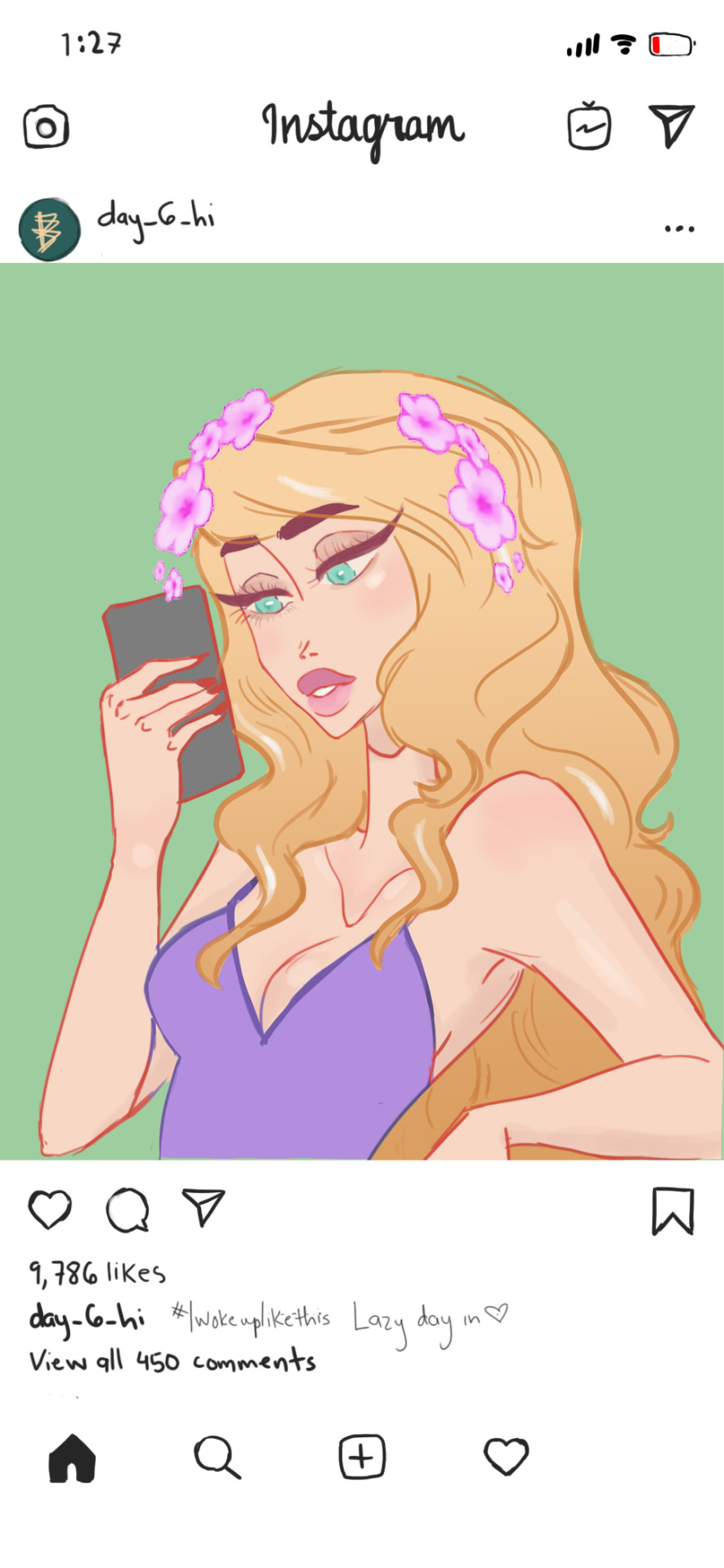
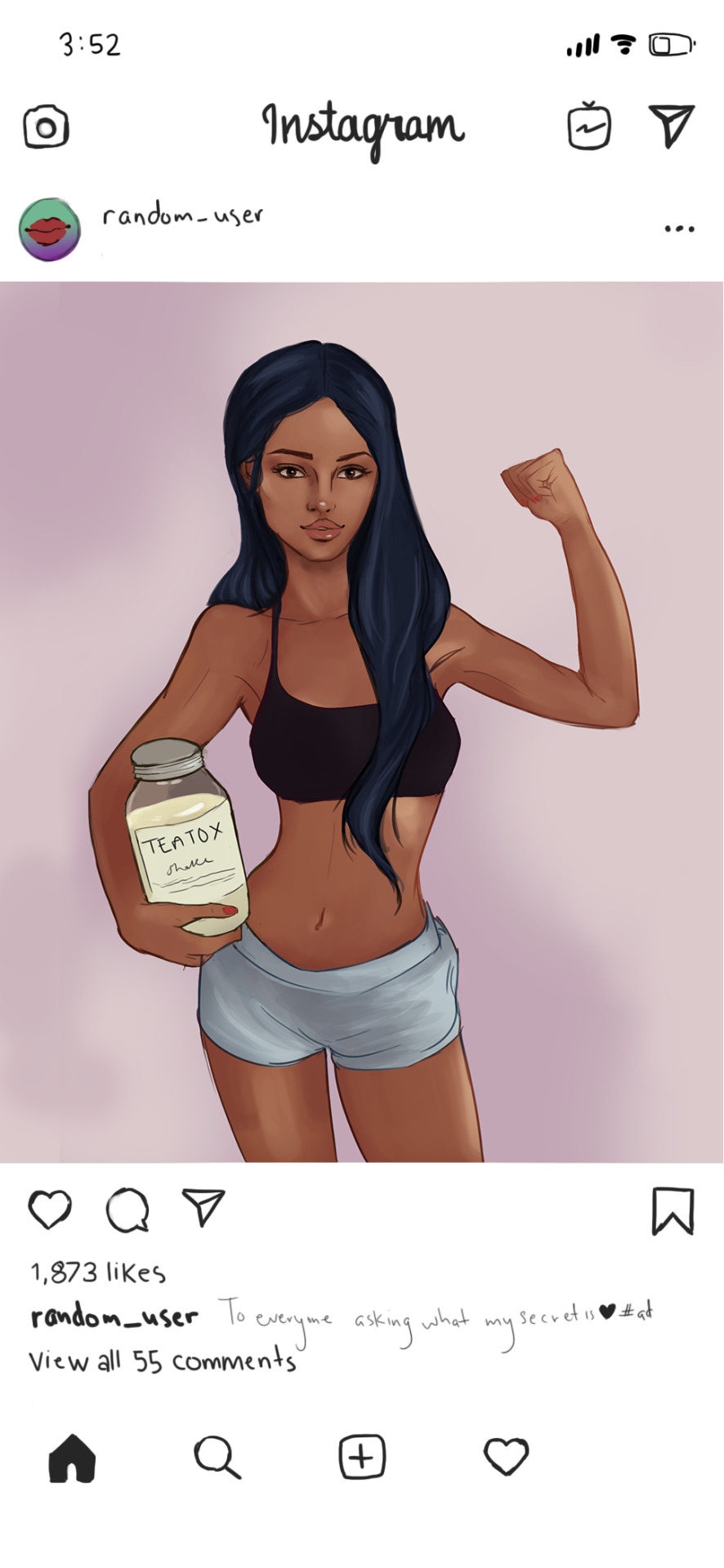
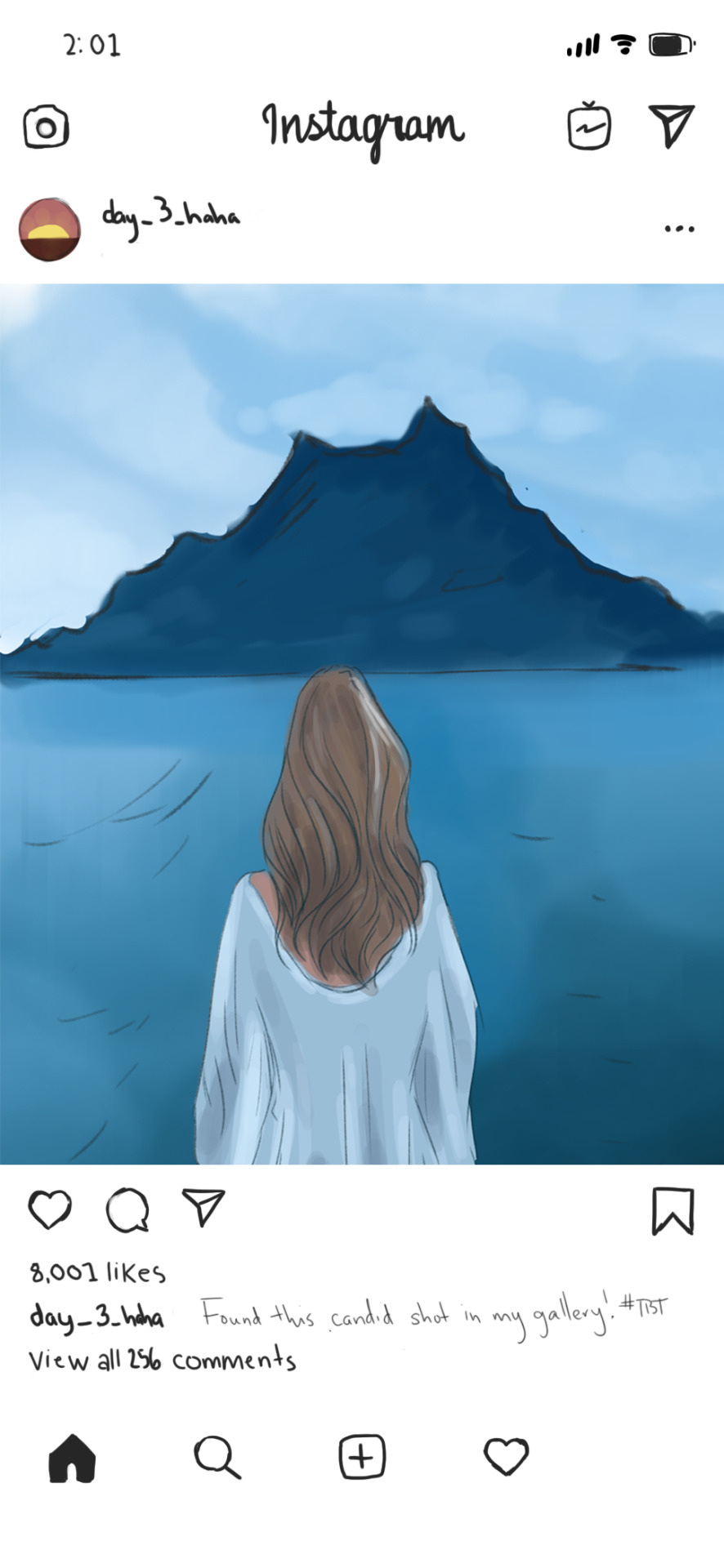

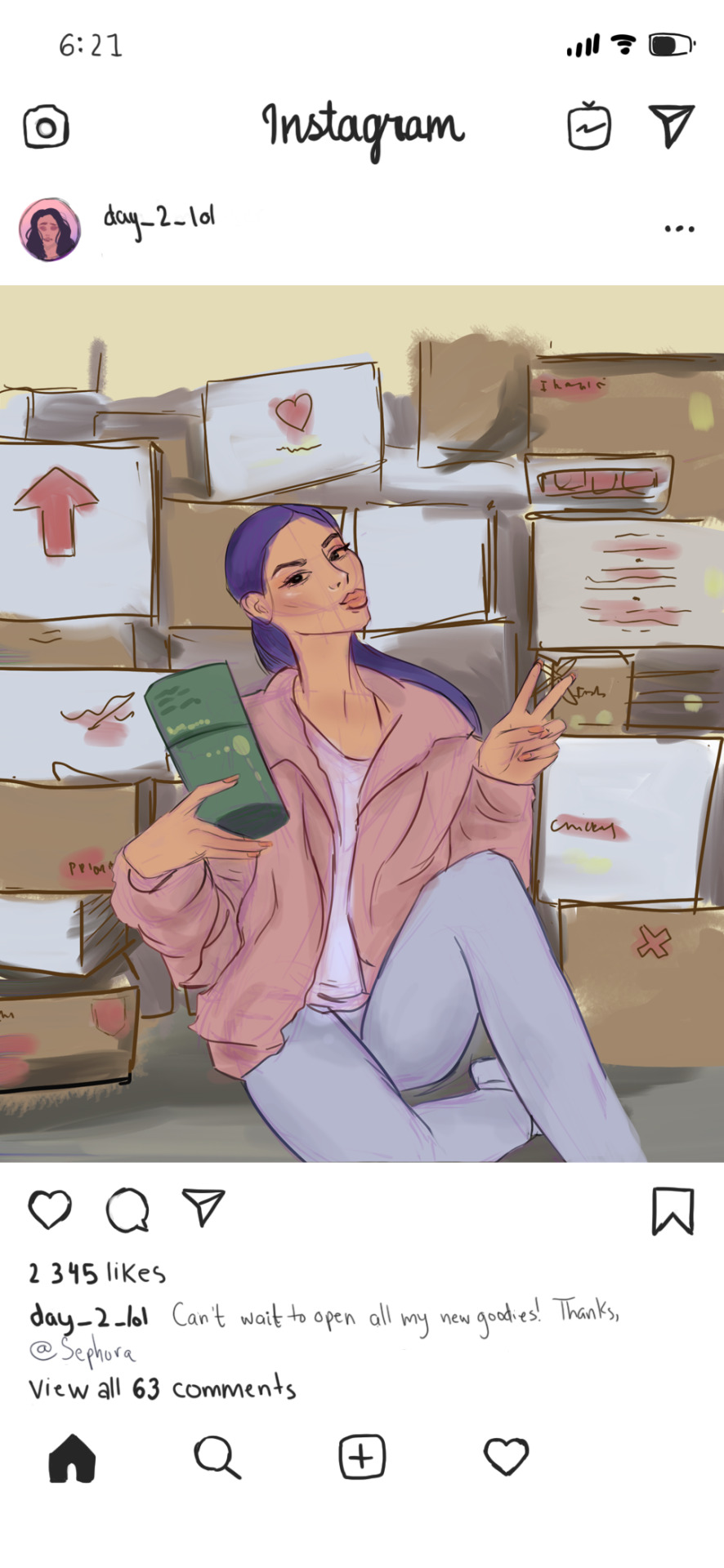
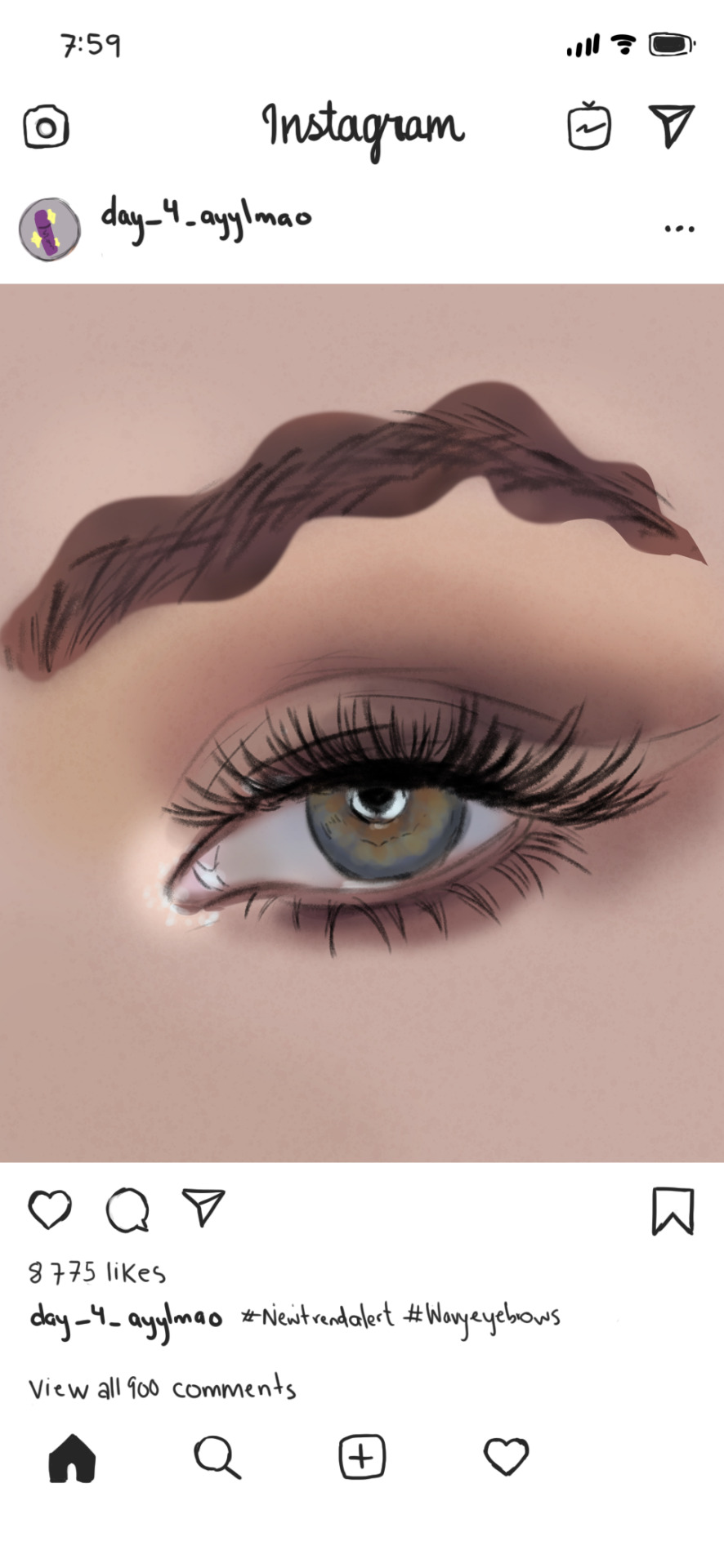
7 day practice - Spring break
Complete 7 or more days of a constraint-based daily practice. You should design something that iterates on an idea, and can be done in 15-20 minutes each day.
My idea was to design Instagram post and post format (caption, hashtags) that highlight a different aspect of social media that is harmful/manipulative/just plain weird. It Had to be something I can find on any given influencer's account. I also tried playing with style, ranging from more rendered to more cartoonish, with forms sometimes exaggerated.
Some ideas I brainstormed were:
Advertising products known for harmful effects, or that just don't work, or that are ridiculously priced
Working with clinics? Is that manipulative or not? Is it better to be frank and transparent about the fact that you get enhancements?
Collabs - sticking their name on something and selling it for much more
Weirdly exaggerated proportions
Using various degrees of filters but disguising that under a casual veneer e.g: “just woke up”
Working with companies but being deliberately obscure about it
A deliberate and kind of creepy pandering to a much younger audience
Performative wokeness - #feminism #happy international women's day
Jumping on a trend for engagement, usually really weird but it gets views- "doing my foundation with an egg"
Hauls and sponsorships - how they leads to this consumerist culture of buybuybuy
recycling the same exact photo style as everybody else - really prevalent on travel blogs - not manipulative/toxic just really boring
day 1: Advertising dangerous products
day 2: PR Hauls
day 3:
day 4: Weird trend hopping
day 5: Restyling advertisements as if they are personal and not paid
day 6: Filters! All of them!!
day 7: Performative ‘wokeness’ - surface level advocacy
0 notes
Text
Topic 2 Proposal - Part 2
Interview with an expert:
So as I mentioned previously, my older sister is an influencer (yikes). I thought that she would be the best candidate for an interview.
That was not true at all. Everything she sent me sounded scripted, rehearsed and strangely diplomatic. I should have known this. She watches way too many talk shows and celebrity interviews, I felt like Ellen. I know my sister’s real feelings, but she hide them on voice note, no matter how much I probed.
So I moved on to Ismail. Ismail is my sisters friend/manager/drives her around/body guard/connections person. He’s lived in the UAE his entire life and knows all the ‘big names’, is around the influencers of the region daily. He’s kind of arrogant and I don’t like him but he does not know that. I still think he would have some good information?
Okay so I just went through the voice notes (he sent thirty minutes worth) and everything he said was deeply boring, not insightful, and derailed completely for the last 15 minutes. It’s my fault, as I asked for voice notes so I could transcribe instead of speaking on the phone (iphone can’t record when taking a call) I’ll include the parts I transcribed under the ‘read more’ but man it is not worth even reading. I’ll have to try again using a different method next time.
“ Basically you want to ask how these influencers are different in this region than in other plces in the world. First of all, the good thing about them is that they are always trying to do better than the other, so it’s a competition, the only thing is they aren’t competing with the ones outside the country. They are copying. Like the Kardashians, Amrezy….and if you look at the content…it looks almost the same…..Also what makes them different is the power of social media in the UAE is more higher I believe, because here the power of interaction is way more than outside. In other countries, brands talk more about the influencers and influencers actually influence about things. Like for example, idk who to name like Mariano (some Italian model). Now he’s a pro model, Italian, and he started modelling with brands, brands started talking about him, then he started his own clothing line, his own stle and if you notice him, he’s not promoting brands as much becaue he’s a
The outside region, they already know what they are doing. Like if I was an influencer I would be a fitness influencer, I would try to say good things like stay away from steroids but over here when they say I’m a fashion influencer, what kind of fashion are you trying to influence? Are you talking about classics/
Over here everybody is an influencer, they don’t know who they’re influencing. If someone says “hey there’s a restaurant can you come talk about the food”. Wait, one minute ago you were a fashion influencer? So what is she actually influencing?
I know a lot of people. Henna knows a lot of people but I know those people more than Henna knows so moving on the next question.
So the second question, what effect does this profession have on them? Some people took it as their career like this is what they want to do forever, and some people want to do it for fun….like if you….the thing is, being an influencer, you know you’re putting an expiry date on yourself. You start to fade…like musicians, like Jay Sean.
(Goes on and on about this, completely ignoring the question)
To stay relevant everyone is doing the same stuff, it requires very little creativity and if you look around, everyone is doing the same thing. And you know exactly what I’m talking about.
(I mentioned in my questions my concerns like sponsoring particular products/services)
Say when it comes to influencers they want to look the best. Better than the competition. So they will do anything possible to take the shortcut. No matter what it is they will go to the highest of heights. Because this is how the industry works. They don’t want to be a topic, because the word spreads around very fast.
So say if one of the influencers was not the same as they are on their social media, for example ‘im doing this good thing I tried this product’ but doesn’t actually use this product. For example, I’ve heard Khris Fade (popular Radio Star) say to my face about how he uses iphone but on air and at events he has to use Samsung because he has a contract with Samsung….do you know what I mean, so this is how these things work.
(derails the conversation completely, forcing me to listen to a twenty-minute voice note for no reason. I’m so annoyed.)
When your into fashion everyone wants to have…the best jawline...abs…booty, they want everything and they want it to be perfect….Emily Ratatouille (He means Ratajkowski) ..Kim Kardashian.”
(Ignores the question and starts talking about his bulking at the gym)
0 notes
Photo
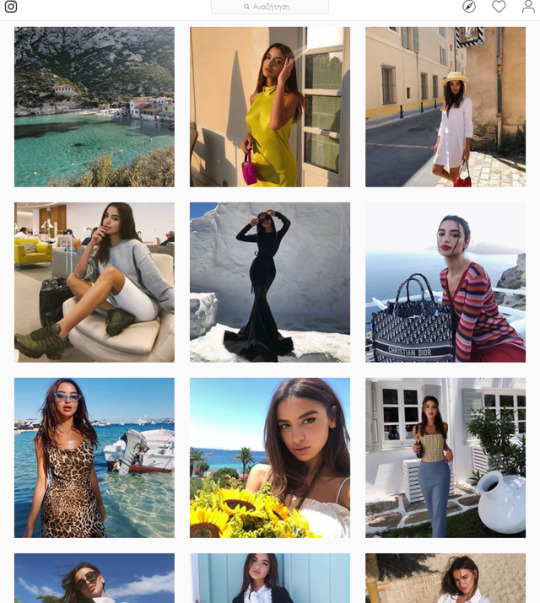
(Above: Rania Fawaz, one of the most popular Dubai-based influencers)
Topic 2 Proposal: Social Media Influencers in the UAE
(I got very carried away you don't have to read all of this, just brainstorming stream-of-consciousness style)
I'm really interested in studying social media culture in the UAE. In particular, I'm thinking of female beauty/lifestyle 'influencers' based in this region. These are girls whose job is to use their influence (follower count) on social media (usually Instagram) to promote products and are thus paid for this (either in real money, store credit, or being given the product(s) for free).
My older sister is one (@Hkouture on Instagram) and I'm in charge of scanning the contracts she gets. And it's so strange: they way they tell her exactly what to write, the way the caption is made to look authentic, ec
It’s a huge business now, companies have shifted from advertising on billboards and commercials to collaborating with influencers. It has its own lingo, algorithms, terminology. These people have so much power, the power of an individual can now be measured with a number and it's displayed on your profile next to the words "follower count".
What I've found, although this is just from my experience and not quantitative research, is that followers, especially the more 'active' ones, are young girls. By active I mean the ones who comment, the ones who like the photos, the ones who buy the merchandise.
I know that the biggest purchaser of merchandise demographically is girls from the age of 9 - 13, so there are instances of older women acting in a way to appeal to this particular demographic. This gets kind of creepy after 10+ years.
UAE based Influencers:
-HudaBeauty
-Rania
-Dima
-Ola
-MoeVlogs and Lana
-BinBaz
I think that there are aspects to it that are insidious. I think that airbrushing being so easily accessible and commonly used is terrifying. Snapchat dysmorphia is so scary. These filters are put over your face so that when you see your actual face without filters you are taken aback, it looks uglier to you. Snapchat filters generally do these things: increase the size of your eyes, narrow your face/nose/lips, lighten your skin tone, blur out pigmentation/acne, erase dark circles and winkles, and lighten the color of your iris. Most filters make your eyes blue. I think it was fine when it was 'joke' filters (the dog, the rainbow) which were really obvious to see. But now there are filters that don't look like filters. They just adjust your face to fit this standard that influencers are pushing too.
Things that scare the shit out of me: CLINICS in Dubai ask influencers to come in, get WHATEVER operations they want as long for free as long as they post about it on social media. I've literally watched a girl get her lips done while she was filming on snapchat. It's all warm and friendly, the influencer, who you perceive as your friend, gushes about how easy/painless the operation was and how she's ALWAYS wanted it and how everyone should get it, oh and she has a 15% discount code you can use!
Modes of research
ethnographic work (lol)
Interviews
There are scholarly articles already in sociology and psychology about the impact of this
Points:
-Contrived authenticity
-lilmiquela = a ROBOT AVATAR created by this L.A based start up that is basically an instagram influencer. She has over a million followers and an elaborate backstory. She's…not a real person..
-People airbrush their photos beyond recognition. All influencers are beginning to look like clones of each other.
-Racism, cultural appropriation for likes, classist
-Consumerist culture. Buy this discount for that you need this
-Promoting products that are proven to be ineffective or harmful. Products that the influencer doesn't actually use. Laxative tea and waist trainers and hunger suppressing lollypops and "special" hair vitamins and collegen-infused water
-Influencer Idolization culture!! There are people who revolve their lives around a influencer, making fan accounts and fan art.
UAE SPECIFIC:
-As usual, the UAE takes everything and hyper exaggerates it. Influencer culture is worse here than anywhere else. The surgery thing is pretty specific to here. There isn't that same backlash or distrust of influencers.
-Every girl I've spoken to who has lived in the UAE personally knows an influencer or has some degree of connection to one.
Think critically about what this is, what it means, and what we are consuming.
Disclaimer: I don't want to be one of those 'oh technology is evil fire is bad thomas edison is a witch' people. I think social media is really cool and gives voices to people who couldn't before. It's really cool how information and awareness spreads. I like vines and ASMR videos. But theres's a difference between 'social media bad' and 'these aspects are particularly damaging to a group that are already under a lot of pressure - young girls, especially young women of color'.
OKAY SO THAT’S THE PROBLEM, which my project has to be a response to:
-I'm thinking of a comic or set of illustrations that points to this problem and sort of exposes it or forces people to think about it.
- I know that there is a lot of media that looks at parts of this, such as the airbrushing. But those focus on campaigns and corporations and brands, which we expect this from, not on the individual level. Or it’s just an annoying piece of ‘social media...bad...kids ?? dont go outside?..read book? nEVER” that some older white man who doesn’t know how to turn on a computer made.
-Inspiration: This very recently published comic called Snotgirl which is about the life of a fashion blogger, and while it has its own narrative, there are some panels that subtly point to the topics I discussed above:
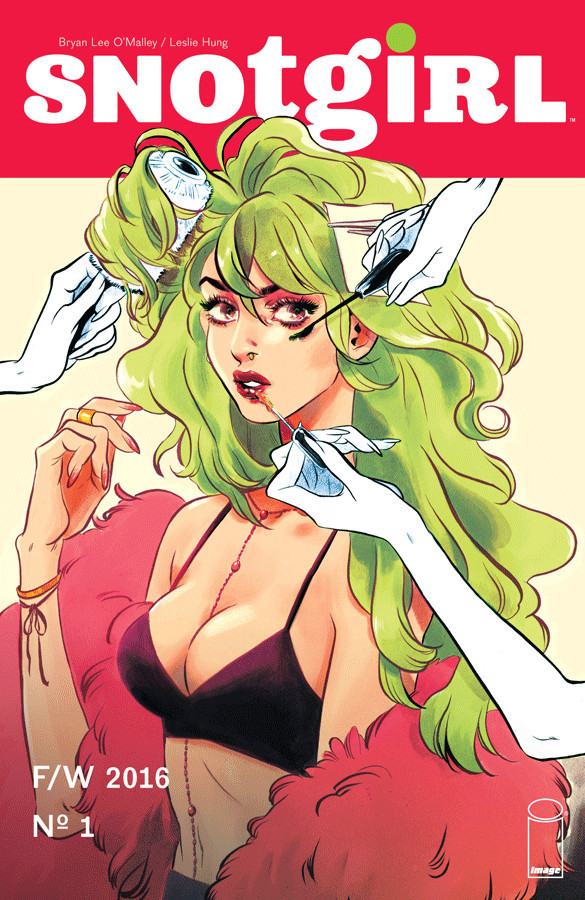
(The different hands retouching her all at once)
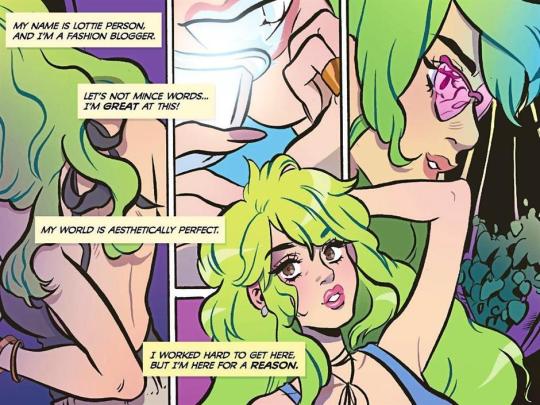
(The choice of the teeth whitening machine is important, as its a very common product that influencers advertise.)
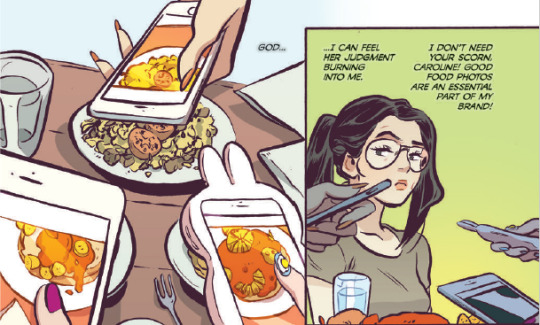
(I just think the coloring is so smart here. The inking and coloring are done by two different people. Look at how, on the phones, the food is filtered to look brighter and more appealing than what it actually is.)
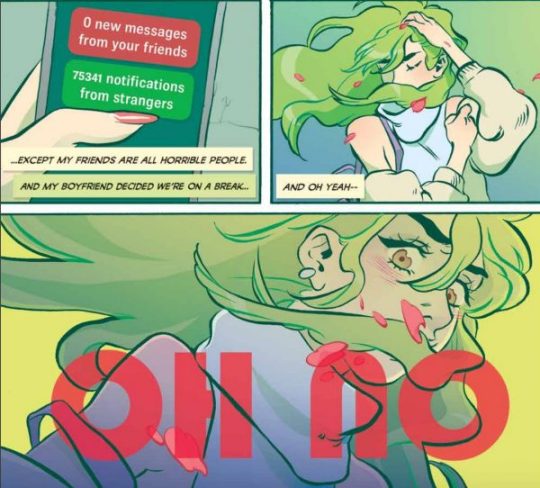
(The first panel is really interesting to me. They didn’t have to include all those notifications from strangers to further the narrative but it is saying something about real/artificial engagement and connection.)
0 notes
Photo
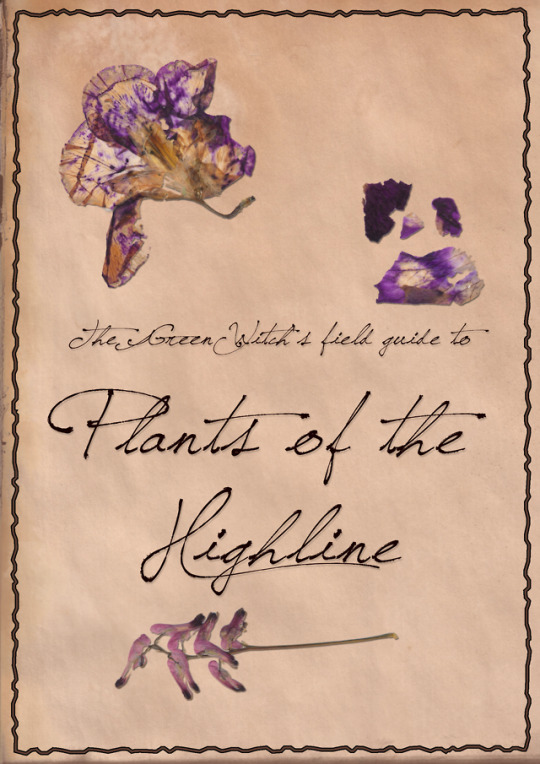
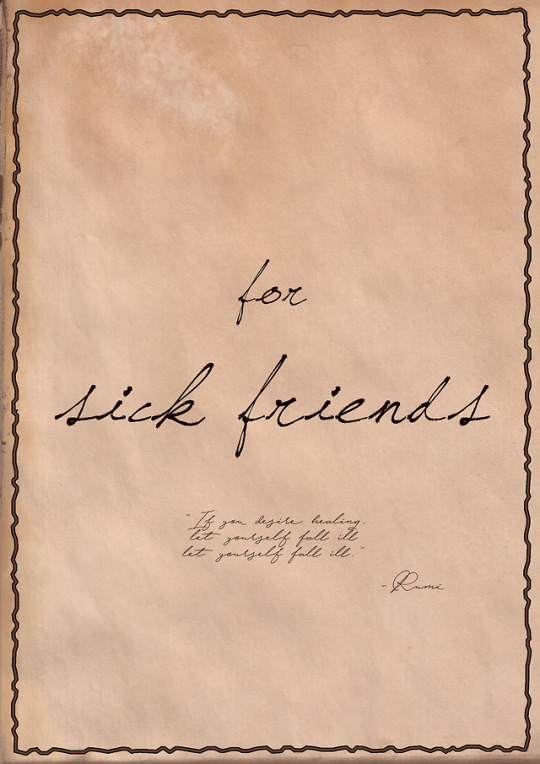
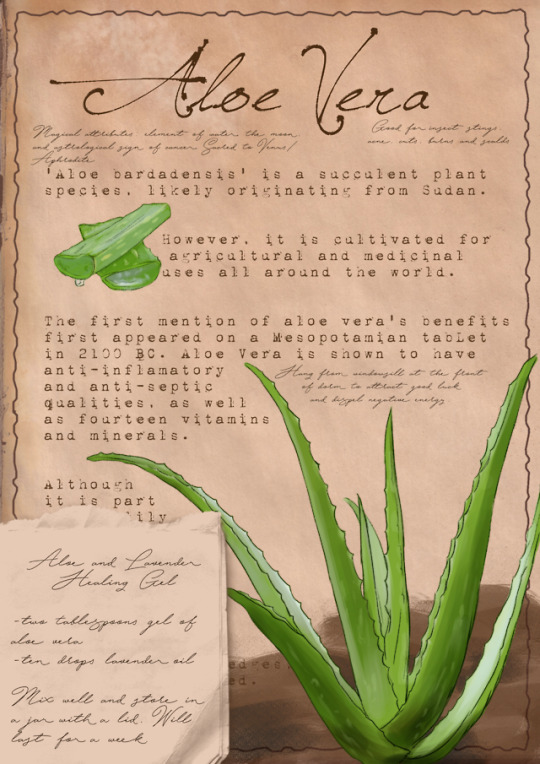
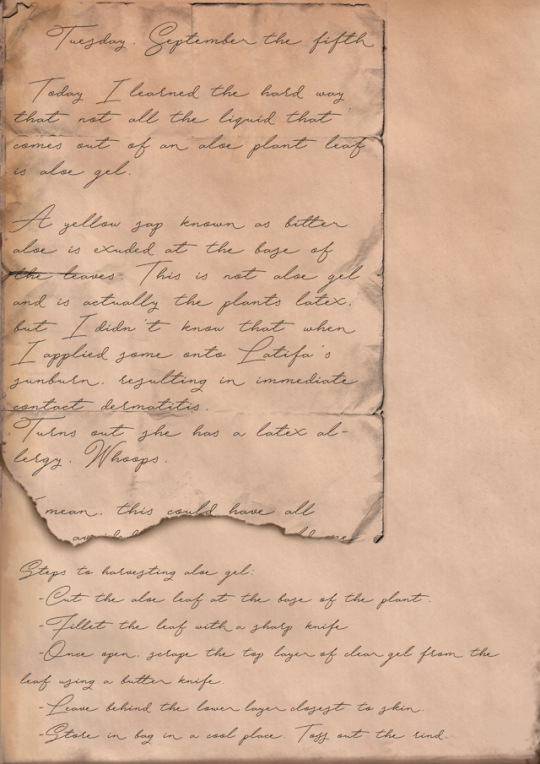
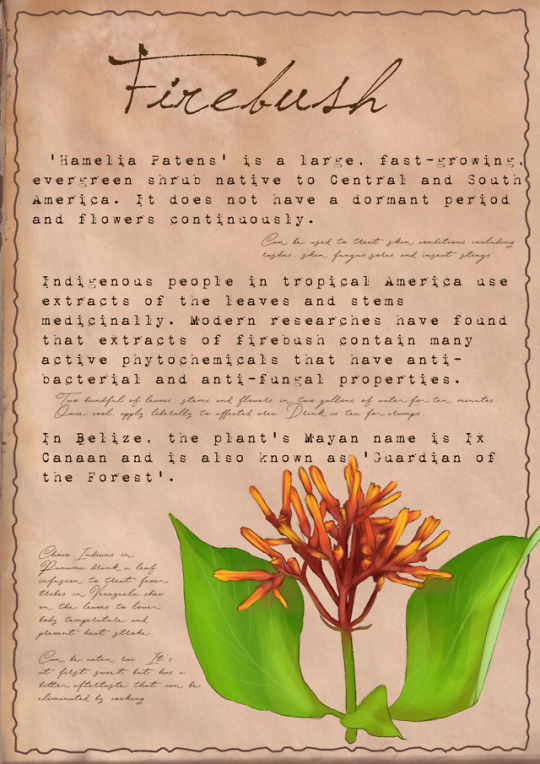
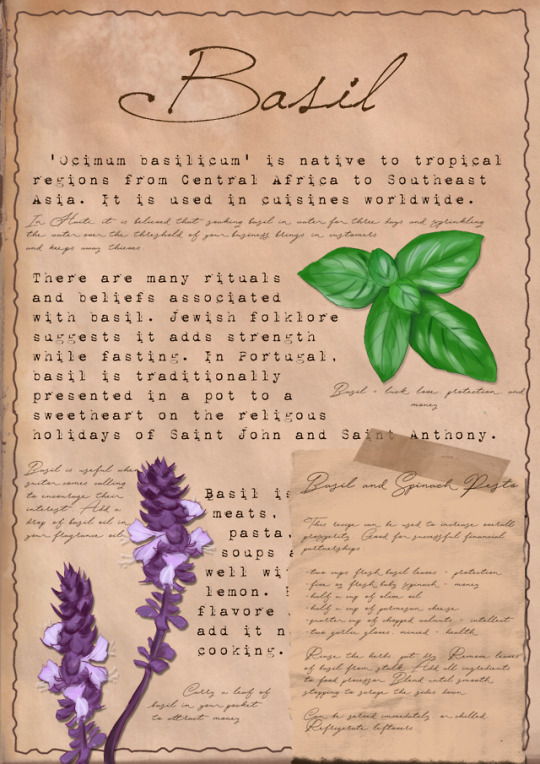
(Some example pages of the final guide)
Final Reflections
What did you learn?
Oh man. I learned so much. From really big things like how long things actually take me to do (answer: a lot longer than I think they will) to more minute things like shortcuts that speed up workflow (You can make a textbox! In photoshop! I learned this around the end, so before that I had to manually space out things and press ‘enter’ whenever there had to be a line break, which makes editing/resizing a pain.)
Aside from the creation of the field guide, I learned so much about the natural ecology of our campus and about plants in general. The most mundane looking leaf could have hundreds of medicinal uses. The plants on campus have really rich histories and are more than just ‘landscape’ or decorative elements. Even in landscaping/gardening, so much thought has to go in this. To pick which plants I was going to include, I had to first research all 60+ varieties that are on the high line alone, which was a daunting task but so fascinating.
Aside from weirdly specific plant knowledge, I think this project forced me to ‘see’ my surroundings in ways I didn’t before. There was so much that I didn’t notice before because I just thought that it was a bunch of green stuff that broke up the grim gray of the highline buildings and pavement. But by forcing myself to really pay attention to what I was looking at changed what I perceived. There’s even those magical moments that you miss if you’re not paying attention, like the pretty birds that loiter around the fire bush or the iridescent, shiny blue bugs on the oleander leaves.
How did you manage your time? Could you realistically improve that?
I don’t think I managed my time very well because I put in most of my hours on the final week. I basically locked myself up in my room and was drawing/editing the document on Photoshop for up to 10 hours a day. I should have started the illustrating earlier! I spent so much time researching how I wanted it to look because I was scared that I didn’t have the talent and skill to make it look like I imagined it, and it was all wasted time.
What would you do differently?
If I had more time, I would add a lot more sub-narratives to the guide. Scrawling notes in the margins, more letters and to do lists. I wanted it to look ‘lived-in’ and tell the stories of a particular person. I had this elaborate plot of the writer poisoning someone but never got to it, although thats probably for the best.
What feedback did you receive?
I think the feedback was generally pretty positive, particularly in regards to the aesthetic appeal, which always makes me happy. I was asked to make revisions to the map, which is good because I wasn’t very happy with it to begin with. I also needed to repeat the symbols that I used in the map on other pages in the field guide.
What was inspiring? What parts?
I made that!! All of it!! yayyyyy
How did you balance research and experimentation? Which is easier? How can you do more of the areas you shy away from?
Research is easy when it involves me in front of a computer screen or cross referencing with library books. Research is very hard and scary when it involves me speaking to strangers. I want to get better at that, but on the other hand, having to find out myself where things were lead to more discovery and effort on my part. This project also emphasized to me that I learn more by doing things, making giant mistakes, and learning from them. I’m not the type to plan meticulously and then make a good final draft. I need to make messy and ugly things first to learn from. That horrible initial pomegranate entry for example. I learned from it what I DIDN’T want to do, and from there, each page I made got consistently better. The neem tree entry I posted previously was better than the pomegranate but still not what I was looking for. It’s a matter of trial and error, but I keep forgetting that with new projects.
0 notes
Photo
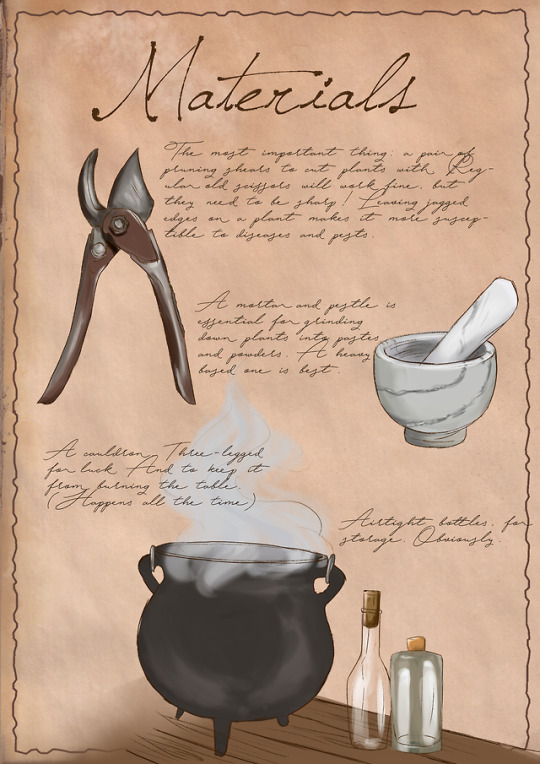
Why do I do these things feb/20
I was supposed to just draft this but got carried away and now it’s three am.
Again, CLOSER to what I want it to be like but something is missing. At this point all of the pages are going to look super different.
Also been playing around with different border styles.
I printed this out and the font is legible to me but I’ll have to ask someone else (at a normal human time) to see if it’s actually legible.
Used a more textured brush for lineart to give it a slightly more pencil drawn feel
the sizes of these things are very weird.
I forgot shadows. need to add those too.
0 notes
Photo
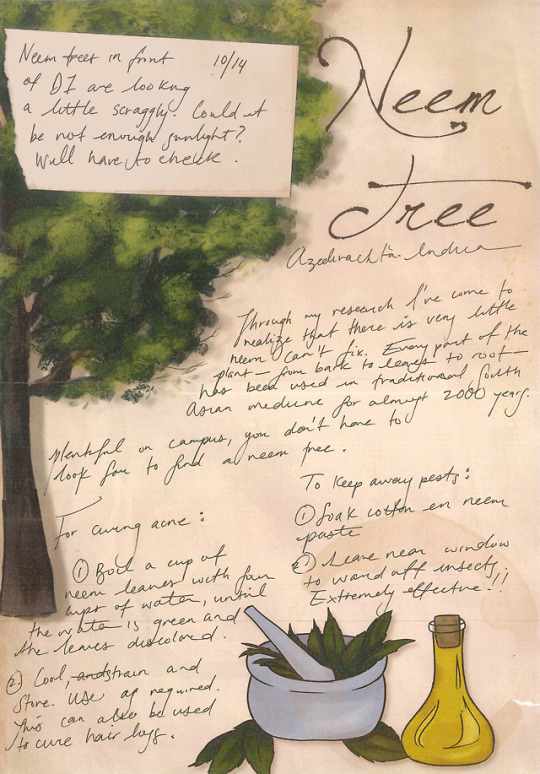


Drafting Designs feb/18
The draft for the neem tree is still not what I’m envisioning it to be in my head, but it’s better than the pomegranate before it. I printed out the first image, wrote the text and crumpled it a little, then scanned it again to get the second. Problems:
Not enough crumpling, you can barely tell. The tears are also not very noticeable
My handwriting is crooked, and hard to decipher. Should probably stick to writing digitally
I did a few more rougher drafts for other entries. The first two are poisonous, the bottom two are medicinal. I’m thinking of around 10 entries in total? Along with an introduction and ‘material’s needed’ page, it seems a good number to shoot for.
Biggest concern right now is designing a map. None of the guides that I am looking at have maps. At most, they will have descriptions of where something is located or how to spot it. I need to create a minimal map of the highline and find a way to highlight a plant’s location.
Should I organize the text of the entries into categories/bullet points or allow it to be more rambly and loose?
The text right now is too clipped and clinical, only focusing on the medicinal or edible usage of each plant. Need to work on that too.
0 notes
